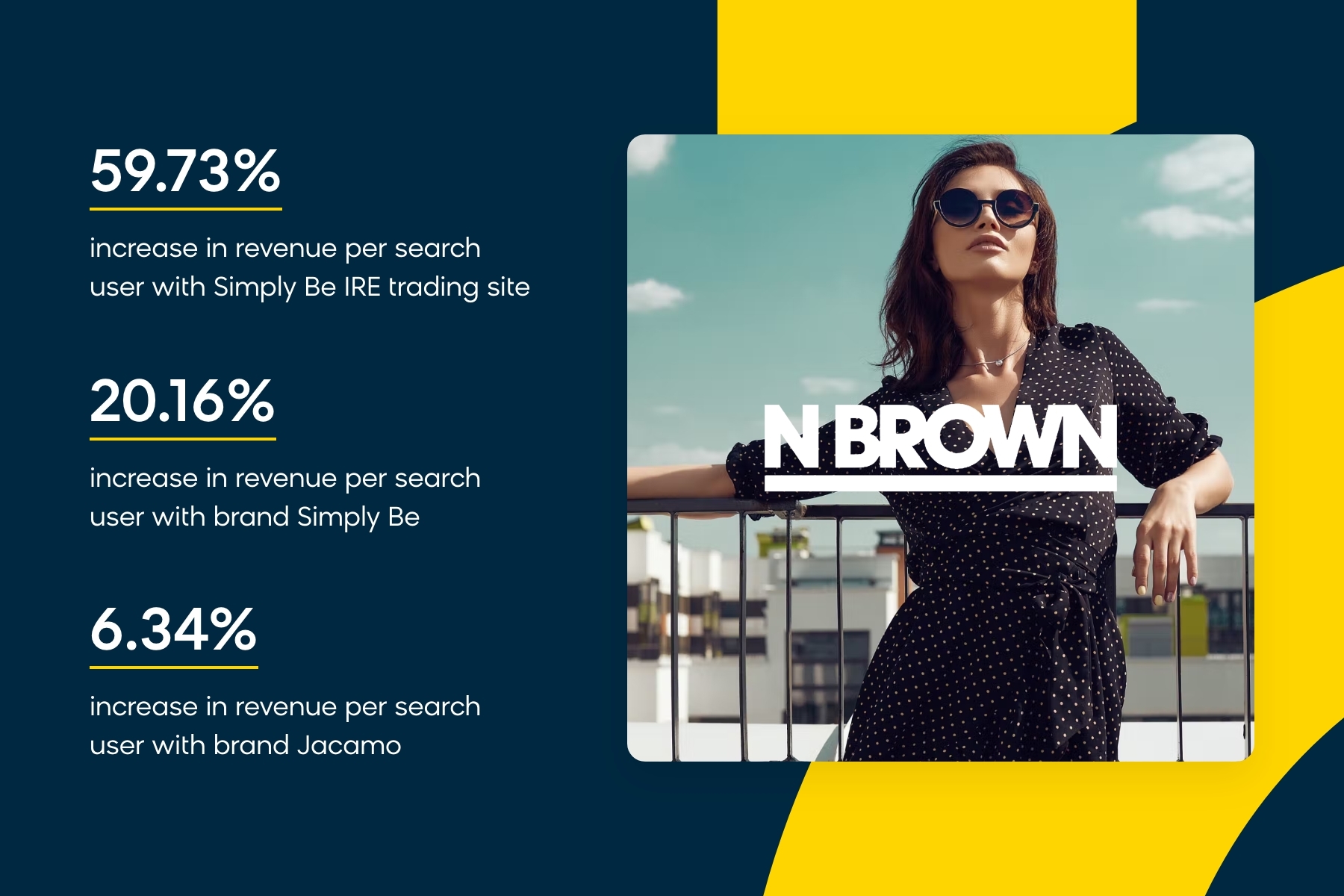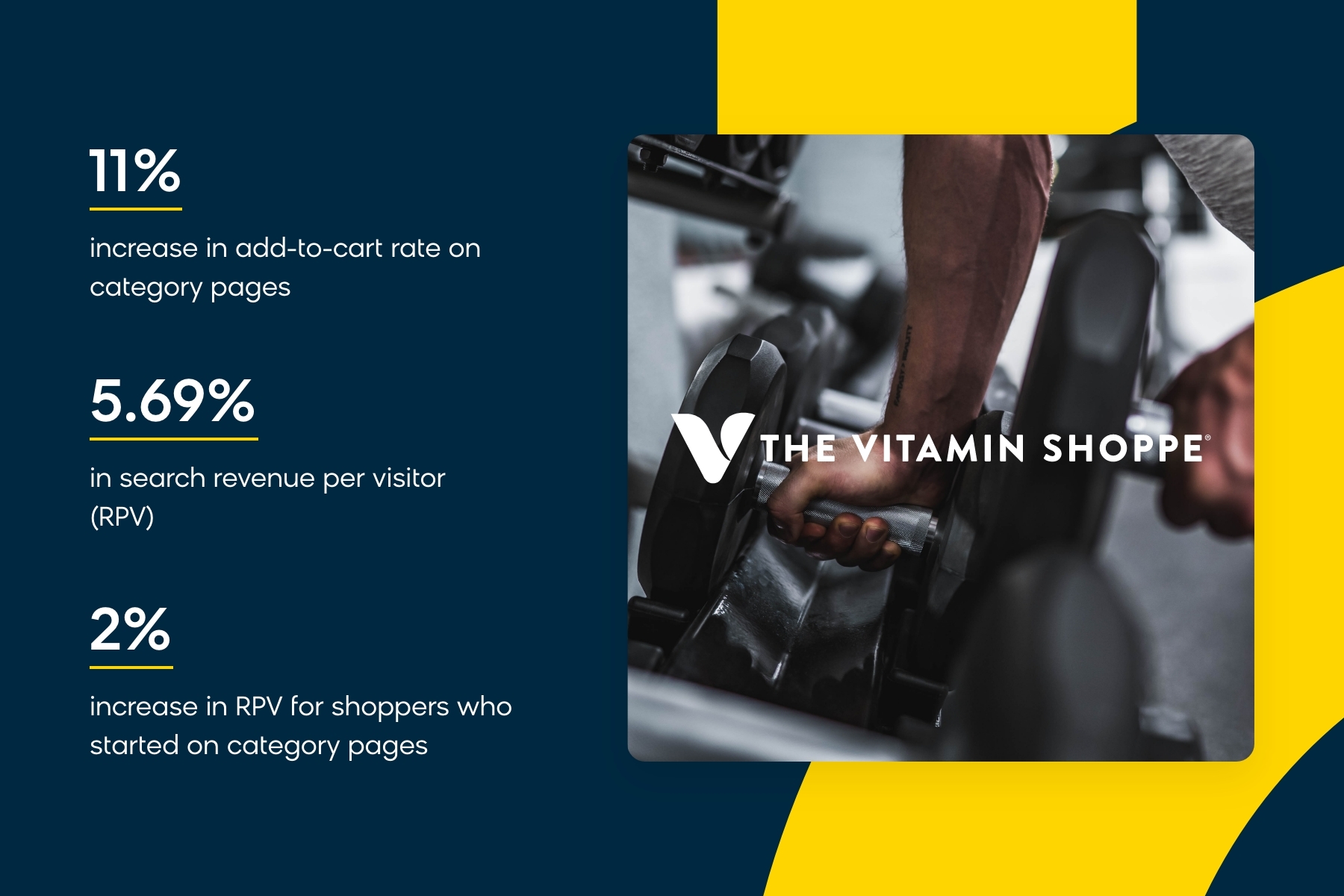The Ultimate Site Search Guide
By Donna-Marie Bohan
12/21/2023
As a world-leading provider of intelligent site search solutions and 14+ years of learnings on the nuances of ecommerce site search, it’s fair to say that Bloomreach is an authority when it comes to optimizing on-site search.
Site search functionality is extremely important to customer journeys because it gets searchers to where they want to go — when they need to get there.
In this comprehensive guide, we’ll define site search, the benefits of optimizing your site search, and what to look for when choosing a site search platform for your business. We’ll also look at site search best practices, as well as examples of winning ecommerce site search and merchandising experiences from best-in-class brands in this space.
Here’s everything you need to know about site search.
- Site search allows users to quickly find products, content, or information within a website by entering relevant keywords or phrases. It can improve the user experience and boost conversions — visitors who use site search are 3x more likely to convert than casual browsers.
- Site search best practices include delivering relevant results, having good UX/UI, making discovery easy, personalizing the results, and investing in automated SEO.
- When choosing a site search platform, businesses should consider AI capabilities, scalability, headless functionality, reliability, and reputation. Because Bloomreach checks off all these boxes, many brands have benefited from Bloomreach’s AI, Loomi, optimizing their on-site search functionality and increasing revenue.
What Is Site Search?
Site search refers to a website function that allows users to find products, content, or information on that site with speed and relevance. It enables users to find what they’re looking for quickly by entering keywords or phrases (aka search terms) within a site search bar.
More than a simple search bar in the top corner of a website, however, site search is a powerful tool to enhance user experiences, increase engagement, and drive conversions by helping visitors find the information or products they desire. Ultimately, site search is about findability — a crucial aspect of online or offline buying experiences. If site search is left untapped, brands miss out on the potential to improve user experiences and boost conversions.
Read this next: Everything You Need To Know About Ecommerce Search Bars
The Importance of Site Search
Before diving into explaining how to optimize your site search and choosing a site search solution to help you do it, it’s worth examining why site search is important to begin with.
Site search might only account for a small percentage of usage, which leads to companies sometimes downplaying its importance and choosing to invest their optimization efforts in another part of the site experience. What they forget is that visitors who search are 3x more likely to convert than casual browsers. This is because visitors who use the search function are on a mission to find something, which means they have a much higher purchase intent. As a result, the search feature can account for 30-45% of your revenue if it’s optimized for the right ecommerce metrics.
As we’ll outline in this section, there are several reasons why businesses should consider investing in a dedicated site search solution and making it an ecommerce priority.
Read this next: Tech Consolidation vs. Ecommerce Site Search Solutions — 3 Risks To Consider
User Experience
Users expect search to deliver the results they’re looking for, so with a great site search engine in place, you can provide exceptional user experiences. Consequently, this will lead to higher engagement rates, retention rates, and conversions.
When a website expands, it can become increasingly difficult for your site to keep up with what users search for. In this sense, growing pains can actually harm your user experience (UX). But with the right site search, visitors can navigate a site easily, find what they’re looking for, and get recommendations for other products or content as they continue their journey.
Visitor Analytics
One of the primary benefits of site search is the insights it provides through visitor analytics. User intent data is valuable because it allows you to understand what a website visitor truly wants in their own words. Site search data can help businesses identify which products or services are in high demand, what information visitors are looking for, and what pages are frequently accessed.
With site search analytics, businesses can refine their site experience by tailoring content to a visitor’s needs and preferences, which can improve visitor satisfaction and loyalty. Intent data can also be used to fill in content gaps and serve visitors with content you haven’t considered showing before. And, it allows you to really understand your visitors and optimize results for relevancy.
Reduced Customer Support Needs
A reliable website search feature can decrease the need for customer support by allowing users to find the information they need quickly and easily. With an effective search function, visitors can locate the exact information they need without having to navigate through multiple pages or contact customer support.

By reducing the reliance on customer support, a robust site search experience can improve efficiency and save businesses both time and money. The time saved for employees can be reinvested in other important tasks, which in the case of customer service, would be supporting more complex queries and improving overall customer satisfaction. In addition, businesses can reduce the costs associated with customer support, such as staffing and training expenses.
Customer Acquisition and SEO
Another significant benefit of excellent site search is its impact on customer acquisition and SEO. By providing visitors with an intuitive search experience, businesses can increase the likelihood that visitors will stay on their site and complete a purchase. Additionally, search engines like Google prioritize sites with good search functionality, so having a strong site search can improve a website’s search engine ranking.
When you discover highly-searched words on your site, you have an opportunity to strategize on how to address the user intent behind those words. From an ecommerce perspective, if you can implement automated SEO, you can boost your ranking by automatically targeting the most profitable keywords. This kind of solution indexes the web to understand what customers are looking for and all the ways that they’re searching for your products. Empowered by these insights, you can optimize your site for long-tail queries.

How Does Site Search Work?
When it comes to online shopping, site search is an essential tool for visitors to easily find the products or information they’re looking for. But simple keyword matching is no longer enough to deliver personalized and relevant results. That’s where semantic search comes in.
Semantic search is a search engine that understands how people speak, which goes beyond natural language processing (NLP) and into the ability to parse each word of a search query into its respective attribute and makes sense of ambiguous words. For example, a query like “shirt dress” would be interpreted as “shirt” being the style and “dress” being the product type. Meanwhile, a query like “dress shirt” would be interpreted as “dress” being the style and “shirt” being the product type.

Semantic search engines work by focusing on two main functions of search: retrieval and ranking. Retrieval is the process of finding the set of products in a catalog that matches what the user is searching for, while ranking is the process of ordering the retrieved products in a particular sequence. The best search engines optimize for both retrieval and ranking to determine search intent accurately.
Other search engines in the market today may focus on only one aspect of the search process, such as basic algorithms that impact ranking or retrieval. These solutions typically lack query understanding or built-in intelligence, requiring heavy curation and manual training for things like synonyms, misspellings, and assortment gaps.
At Bloomreach, we take a different approach by applying a broad set of intelligent algorithms and features that touch every part of the search process. This is how we’ve maintained our market-leading position in ecommerce search for 14+ years. Our search experts have set the standard for driving search revenue through true semantic understanding at the core, delivering the most personalized and relevant results for each customer.
Search has come a long way since simple keyword matching. With semantic understanding and machine learning, Bloomreach’s search engine is an example of how intelligent algorithms and features can be applied to every part of the search process to achieve at a higher level.
Site Search Best Practices
Having on-site search alone is not enough to enable visitors to find what they’re looking for and enjoy a seamless search experience. To ensure that this happens, it’s essential to follow some site search best practices.
Deliver Relevant Results
Ensuring relevance is the first and foremost best practice for site search. Relevance is crucial because users have specific expectations when searching and if the results don’t meet their expectations, they’re likely to bounce and leave the site. Make sure your search engine provides accurate results by utilizing a robust algorithm and a database that’s updated regularly.
Have Good UI and UX
The search bar must be visible and easily accessible from every page, and the search button should be clearly marked. The search results should be displayed in a way that makes it easy for users to scan and identify the information they need, such as browsing relevant snippets of content or providing filters and sorting options.
Make Discovery Easy
Your search engine should be able to understand user intent and provide relevant suggestions for queries related to what the user is searching for. For example, if a user searches for “Levi’s jeans,” but you don’t carry Levi’s, you can relax the queries to show other brands instead of a no results page, which leads to more revenue and faster ROI.
Personalize the Results
By collecting user data and preferences, your search engine can provide more personalized results based on past behavior, search history, and interests. Personalized search results can help improve the user experience and increase engagement because users are more likely to engage with content that’s relevant and tailored to their unique needs.
In following these best practices, you’ll be well on your way to delivering a best-in-class site search experience.

Site Search Examples
With site search being a critical aspect of ecommerce that can make or break your brand, many retailers have turned to Bloomreach Discovery’s search and merchandising solutions to improve their site search functionality and increase revenue, using a combination of Loomi, our ecommerce AI, and intuitive merchandiser tools.
N Brown
Fashion and grocery retailer N Brown sought to address poor site search functionality and performance and deliver personalized experiences that convert. With Bloomreach Discovery, it was able to retrieve the most relevant search results and rank them for maximum business impact. As a result, the company saw a nearly 60% increase in revenue per search user on one of its brands.
The Vitamin Shoppe
The Vitamin Shoppe wanted to improve its category pages and provide more resources to customers who were focused on browsing and learning about the products. By investing in Bloomreach’s site search and merchandising solutions, the vitamins and supplements retailer was able to deliver more relevant search results and see an 11% increase in its add-to-cart rate on category pages, a 5.69% increase in search revenue per visitor, and a 2% increase in revenue per visitor for shoppers who started on category pages.
HD Supply
HD Supply, a B2B distributor with millions of SKUs, wanted to help its buyers find the right products quickly and reliably before moving on with their workdays. By focusing on site search, HD Supply was able to redirect its ecommerce efforts and improve its add-to-cart rate by 4% directly from the search bar, resulting in a significant increase in conversion rates and a 16% increase in revenue from search.
For more examples of winning site search experiences powered by Bloomreach to inspire you, check out our other product discovery case studies.
Choosing a Site Search Platform
Choosing the right site search platform (or building your own) can be a daunting task, with many factors to consider before making a decision. Here are some questions to ask before choosing a provider:
-
Does it have AI?
Effective site search doesn't happen on its own. The right site search platform uses AI to understand user intent, provide personalized results, and ensure relevance. Look for a platform that utilizes machine learning and natural language processing to improve product discovery for users. As large language models continue to improve, they become more powerful, shaping how impactful your search results are at driving conversions.
-
Is it scalable?
How will it scale? One of the most important things to consider is whether the search platform will be able to handle the size and complexity of your website as it grows. You’ll want a platform that can scale with your business so you don’t have to keep switching providers as your website expands.
-
Is it headless?
A headless site management solution gives you complete control over the user experience, allowing you to design and customize the search results page to fit your brand and customer needs. If you’re looking for maximum flexibility and control, a headless platform is what you need. Or better yet, find a solution that’s MACH-compliant.
-
Is it reliable?
Reliability is key when it comes to your search engine. You don’t want your search results to be down or slow when customers are trying to find what they need. You’ll also want to consider how well the site search solution will perform during peak trading times such as Black Friday and busy holiday shopping seasons. Look for a provider with a proven track record of uptime and fast response times so you can feel confident at all times.
-
What is its reputation? How long has it been around for?
Experience counts when it comes to site search. A provider that’s been around for a substantial amount of time is likely to have a proven track record of success and a deep understanding of the industry, not to mention a wealth of knowledge, resources, and data to help you achieve your search goals.
-
Does it offer powerful search APIs and developer tools?
A search platform with robust APIs and developer tools will give your team the flexibility and control they need to create a search experience that meets your specific business needs. This will also allow you to integrate with other systems and tools seamlessly as your company builds your ecommerce technology stack.
So, Where Do You Go From Here?
The future of site search is exciting, with advancements in AI, machine learning, NLP, and personalized customer experiences shaping the landscape. By investing in a robust search platform for your ecommerce site, you’ll be well on your way to delivering a seamless and personalized search experience that drives revenue, increases customer satisfaction, and sets you apart as a leader in the industry.
That's why you need Bloomreach Discovery, which is a search solution that ticks all these boxes (and more).
Our solution is more than "good site search" — it's a powerful combination of AI-powered site search, SEO, recommendations, and product merchandising to help you deliver personalized search results for your customers. And with its APIs and support for every major ecommerce platform, Bloomreach is a flexible and scalable solution that can grow with your business.
Ready to take your next steps? Learn more about how to automatically personalize your search experience with Bloomreach Discovery.
Found this useful? Subscribe to our newsletter or share it.









